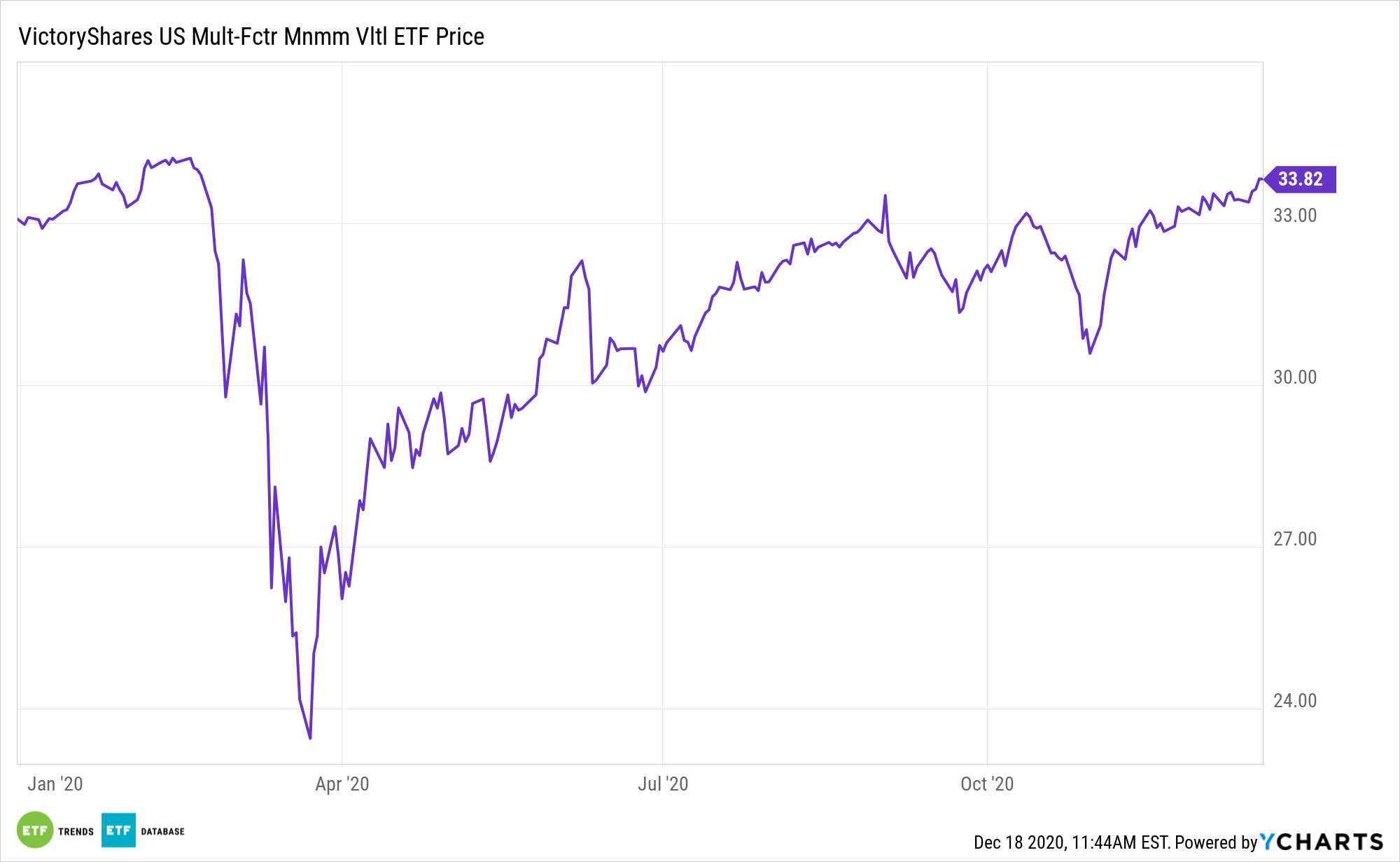The low volatility factor isn’t doing investors a lot of favors this year as the S&P 500 Low Volatility Index is off by 4.44%. That doesn’t mean market participants should gloss over the factor in 2021. The VictoryShares US Multi-Factor Minimum Volatility ETF (VSMV) is an inviting way to reduce equity market turbulence, and it’s modestly higher this year.
VSMV follows the Nasdaq Victory US Multi-Factor Minimum Volatility Index, providing the fund with a potentially superior mousetrap than simply owning a basket of the lowest volatility equities – an approach that has plenty of drawbacks. What makes VSMV appealing relative to older, competing strategies is that it focuses on factors beyond low volatility.
Low volatility stocks and the related exchange traded funds typically don’t capture all of a bull market’s upside. Conversely, the factor traditionally mitigates downside risk.
VSMV starts with a universe of mid- and large-cap U.S. companies taken from the Nasdaq US Large Mid Cap Index and then ranking the companies using a number of proprietary fundamental factors like dividend yield, sales growth, and other financial metrics identified by a quantitative multi-factor selection process to identify those most likely to outperform the broader market. Furthermore, the underlying index uses an optimization tool to weight individual securities to minimize absolute volatility.

Picking Apart the VSMV ETF Thesis
By focusing on a multi-factor approach, VSMV can home in on holdings that exhibit the right factor exposures, such as quality, momentum, and profitability. This approach helps, particularly when traditional low volatility sectors and stocks are “bid up” by the market at times.
What makes VSMV all the more important in today’s environment is its quality exposure. Quality shares some traits with low volatility, but it’s its own factor and one that’s persistent over time. In other words, VSMV is more multi-factor than single factor ETF.
The multi-factor min volatility ETF starts by utilizing a smart beta indexing methodology to screen for factors that have proven to help enhance returns and then implements a low volatility weighting methodology to better-manage downside risks.
To put this in perspective, current popular low-vol ETF strategies only select and weight companies that exhibit the least volatility from a broader benchmark like the S&P 500. VSMV first screens for smart beta factors like momentum, quality, value, and growth before implementing a volatility weight.
For more on innovative portfolio ideas, visit our Nasdaq Portfolio Solutions Channel.
The opinions and forecasts expressed herein are solely those of Tom Lydon, and may not actually come to pass. Information on this site should not be used or construed as an offer to sell, a solicitation of an offer to buy, or a recommendation for any product.

